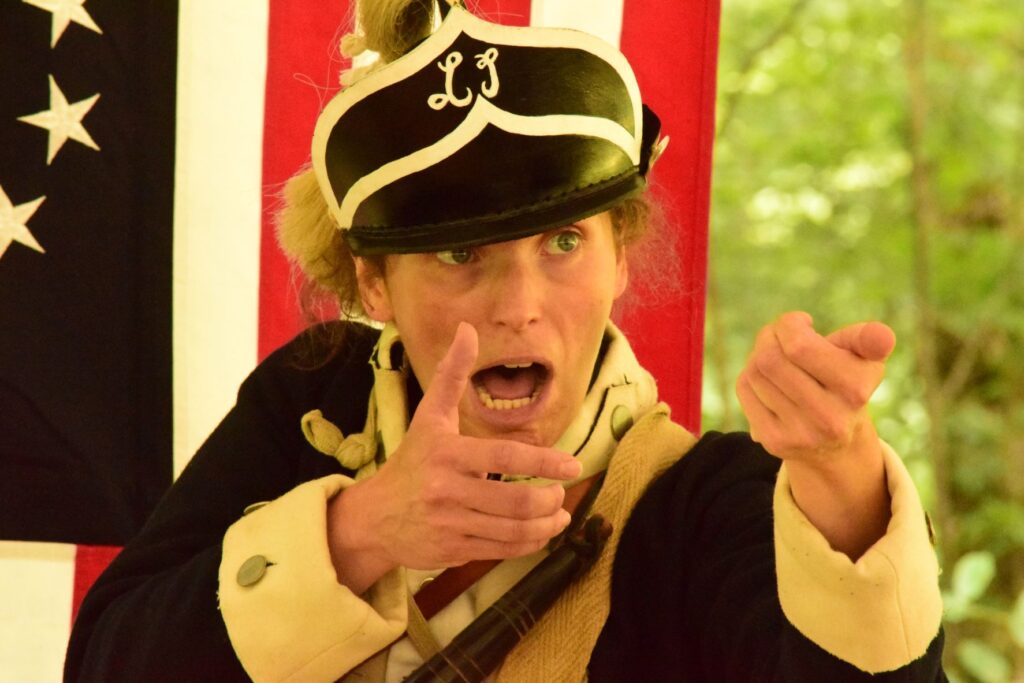Welcome to week 80 of Bidwell Lore! This week we share part 2 of the story we began last week of how the Bidwell family is connected to Deborah Sampson, the first woman to serve and be honorably discharged from the US military. Thanks to Rick Wilcox for putting this together.
The journey to Deborah Sampson began with a letter last week from Barnabas Bidwell to his wife Mary where he wrote about visiting with Mrs. Spring, Miss Binney, and Marshall Spring. This leads into the rest of the article about Dr. Barnabas Binney, who treated Sampson’s wounds, and also his father, Captain Barnabas Binney, who transported four Stockbridge Mohicans to England aboard The Ship Lion. Barnabas Bidwell mentioned to Mary he would give the letter to George Allen, son of the Fighting Pastor Rev. Thomas Allen of Pittsfield. Well, for Bidwell Lore it was too much to resist, so an article about him was inspired, and low and behold the Stockbridge Mohicans assisted Rev. Thomas Allen at the Battle of Bennington. More on that story after the holidays… There were a couple of other people whose names came up in this mix who we felt deserved an article, including General Patterson of Lenox, in whose unit Sampson served, and his aide-de-camp Stockbridge resident Agrippa Hull, who, coincidentally was friendly with Mary and Barnabas Bidwell and catered at their parties. More on General Patterson and Agrippa Hull in the coming weeks.

This short biography of Deborah Sampson comes courtesy of the blog thefemalesoldier.com
Deborah Sampson (1760-1827) was a soldier who fought for the Continental Army during the American Revolutionary War. Born in the small village of Plympton, Massachusetts, Sampson became an indentured servant after her father died at sea. By age 18 she became a free, self-educated woman and initially made a living as a schoolteacher and weaver.
Living in the shadow of the American Revolutionary War, Sampson wanted to join the Continental army, but as this was not allowed she decided to disguise herself as a man. She traveled to New York in the spring of 1781 and enlisted in the Light Infantry Company of the 4th Massachusetts Regiment using the name of her dead brother, Robert Shurtleff.
Sampson was assigned to a scouting unit and fought in several skirmishes against British forces. On July 3rd 1782, she fought in a battle outside Tarrytown, New York, where she suffered two musket shots to the thigh and a sword wound across her forehead. Doctors treated her head wound in hospital, but fearing her identity as a woman would be discovered, she left before they could examine her thigh. She removed one musket ball herself using a penknife and sewing needle but could not remove the second. As result the leg never fully healed.
Needing time for her injury to heal Sampson volunteered to look after a sick soldier, Richard Snow, in a private home. However the house belonged to a Tory named Abraham Van Tassel, who consigned the pair to live in a stifling hot attic during the summer. Snow died under the conditions. Sampson later had her revenge by leading a night raid on Van Tassels’ estate with the assistance of Van Tassel’s own daughter. 15 men were captured in the raid.
In April 1783, Sampson was promoted and served as a waiter for General John Paterson [1]. That summer Sampson was among those deployed to Philadelphia to put down a minor rebellion by American officers. During this time she came down with a fever and the doctor who treated her, Barnabas Binney, discovered she was a woman. He kept her confidence while he treated her but later informed General Paterson.
By the time Sampson had recovered the war was over and she was honorably discharged from army. She returned to Massachusetts where she married a farmer named Benjamin Gannett, with whom she had three children. In 1792, she petitioned the state for the military pay that had been withheld from her because she was a woman, and won her case. In 1804, her friend Paul Revere, a known hero of the Revolutionary War, helped her fight for a military pension, which was also eventually granted.
Sampson died in 1827 from yellow fever, aged 66. Numerous memorials to her can be found in her hometown of Sharon, Massachusetts. thefemalesoldier.com

So, now we have come full circle:
Barnabas Bidwell married Mary Gray whose mother was Sarah (Spring) Gray. One of Sarah Spring’s brothers was Dr. Marshall Spring, of Watertown. Dr. Marshall Spring married Dr. Barnabas Binney’s widow, Mary (Woodrow) Binney Spring.
Dr. Barnabas Binney was the Army Surgeon during the Revolutionary War who discovered that the wounded soldier Robert Shurtliff was actually the woman named Deborah Sampson!
And in 2018, the Bidwell House Museum presented the incredible story of Deborah Sampson, as portrayed in a one-woman play by Judith Kalaora, creator of HistoryAtPlay.com.
Next week we will share with you a short article about the above-mentioned General Paterson, who had a respected career and has a connection to the town of Lenox.
[1] Commonly spelled Patterson, who was from Lenox. Patterson’s aide-to-camp was a free black from Stockbridge, Agrippa Hull, locally famous for his wit and catering services, which was frequently used by Mary and Barnabas Bidwell.